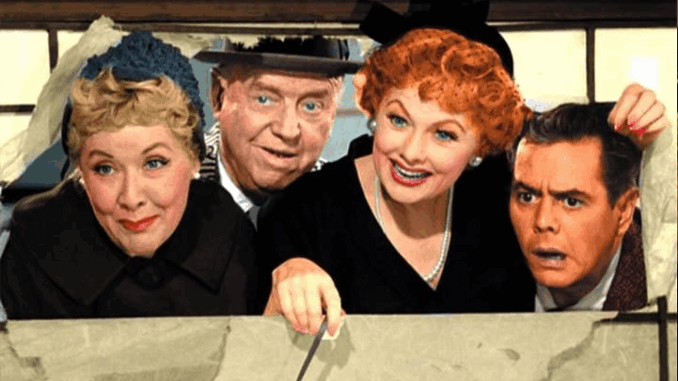
If Season 1 of I Love Lucy was a technical and comedic breakthrough, then Season 2 was a bold declaration that this sitcom could also reflect real life — even when real life was controversial.
With stronger storytelling, increased character depth, and one of television’s most groundbreaking storylines — a pregnancy — Season 2 didn’t just maintain the show’s popularity. It raised the bar for what television could be.
🤰 Bringing Pregnancy to Prime Time
In 1952, the idea of showing a pregnant woman on television was virtually unheard of. Networks considered it inappropriate, and the word “pregnant” was even banned from scripts.
But when Lucille Ball became pregnant in real life, the creative team — including Ball and her husband/co-star Desi Arnaz — decided to embrace it.
Instead of hiding her pregnancy behind props or writing her out temporarily (as was common then), the show crafted a storyline where Lucy Ricardo also becomes pregnant, marking the first time a pregnancy was portrayed on American television.
The episode “Lucy Is Enceinte” (using a French word to avoid saying “pregnant”) tackled the moment with both humor and heart, culminating in an emotional scene where Lucy gently tells Ricky the news — one of the most memorable moments in sitcom history.
Later that season, “Lucy Goes to the Hospital” aired on January 19, 1953, just one day after Lucille Ball gave birth to her real-life son, Desi Arnaz Jr. The episode drew an astonishing 44 million viewers — a number that surpassed the presidential inauguration that same week.
😂 Physical Comedy at Its Peak
Season 2 is also known for delivering some of the greatest physical comedy in the show’s history. In “Job Switching,” Lucy and Ethel’s chaotic misadventure at a chocolate factory — trying and failing to keep up with a conveyor belt of candies — is now considered one of the most iconic sitcom scenes ever filmed.
Lucille Ball’s body language, facial expressions, and split-second comedic timing showcased her mastery of physical humor, rivaling legends like Charlie Chaplin and Buster Keaton.
Episodes like “The Ballet” and “The Operetta” added new layers to Lucy’s comic persona, as she took on more exaggerated and absurd roles with flawless control and commitment.
📈 A Cultural Milestone
Season 2 of I Love Lucy wasn’t just about laughs — it was about impact. It normalized pregnancy, redefined female representation on television, and showed that sitcoms could handle emotional weight without losing their comedic core.
Behind the scenes, Desilu Productions continued to refine the show’s high production standards, setting the stage for future classics. The success of syndicating Season 1 episodes proved the financial power of reruns, influencing the entire industry model for decades.
💬 Audience Response and Industry Reaction
Public response to the second season was overwhelmingly positive. CBS received thousands of letters from viewers — particularly women — thanking the show for portraying a realistic and joyful view of pregnancy and family life.
The show’s influence rippled through the entertainment world. It proved that comedy could be bold, sincere, and socially relevant — all while delivering laughs.
💡 Conclusion: A Legacy in Motion
With Season 2, I Love Lucy evolved from a brilliant comedy to a cultural institution. It dared to reflect the realities of its viewers, while never losing its sense of humor. It made television more human — and much more powerful.
In doing so, Lucille Ball didn’t just make history — she made millions of people feel seen, heard, and most importantly, understood.
